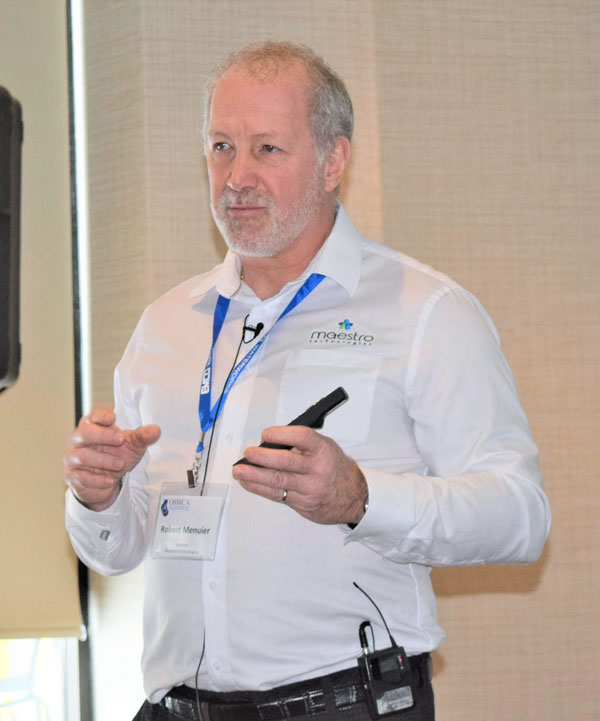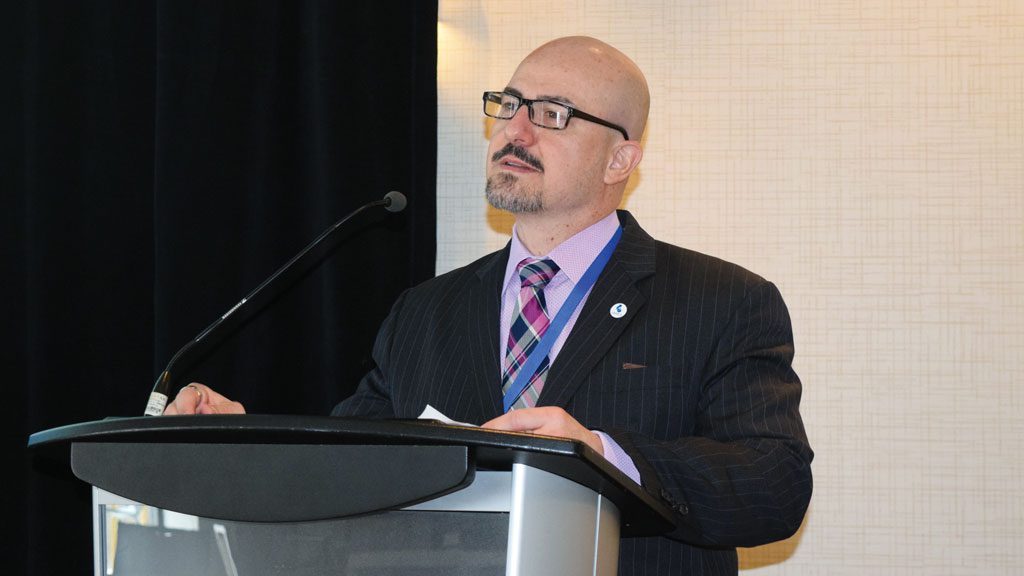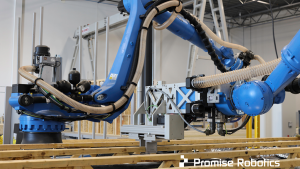The global construction industry is still smarting from the oft-quoted 2017 McKinsey Global Institute report indicating the sector’s labour-productivity growth averaged only one per cent a year over the past two decades, ranking ahead of only agriculture.
But while Ontario Sewer and Watermain Construction Association (OSWCA) executive director Giovanni Cautillo acknowledges that a number of OSWCA’s members remain at the innovation starting line, change is coming, he said.
“People like the status quo,” he commented in an interview after a Feb. 11 presentation on innovation at the OSWCA annual conference held in Blue Mountain, Ont. “You have people who have been running their companies the same for 30 years but there is a new generation that is chomping at the bit.”
Change to embrace new technology is scary, said Cautillo, but it’s inevitable.
“It’s either evolution or revolution,” he remarked. “So either we evolve slowly or we have a drastic change and the industry as a whole has to change their mindset. How do we get over those hurdles? If things have been done the same way forever, why change? You have to have a desire to change.”
The OSWCA presentation was delivered by Robert Meunier, president of Maestro Technologies based in Richmond Hill, Ont. After laying out dozens of tech breakthroughs that are changing the way the sector does business, from Blockchain, 5G, AI and VR to 3-D printing, the Upbrella and electronic data interchange, during a Q and A session Meunier was asked to address such basic issues as whether the sector is going too far too fast and where should sewer and watermain contractors start.

The key goals, Meunier said, are to address efficiencies and remain competitive in a changing marketplace.
“You’re talking of going too fast, well construction is too late,” said Meunier. “There are so many challenges ahead of us.
“If you don’t do anything, if you say I am going to stay the same size and I am not going to change anything, well maybe a competitor will come around the corner and double his efficiency and will win all the contracts. That is the challenge everybody has today, you have to improve your efficiency to grow.”
For firms starting from scratch, Meunier suggested initial steps.
“You shouldn’t have to innovate (yourself),” he said. “The PCLs and the Pomerleaus, they have the R and D departments. There is a lot of technology on the market, it is a question of being there and seeing it.”
First, assign a budget to innovation, perhaps one or two per cent of revenues, Meunier said.
Then, assign responsibilities to at least one person internally to identify opportunities that could work for the firm.
“Maybe he’s going to trade shows, maybe he is watching on the internet, maybe he is looking at the competition, he can go scout a competitor and see what he is doing,” suggested Meunier.
“He should present his findings to the organization, maybe go to the board every three months, saying what is interesting.
“And maybe have at least one project per year. ‘Let’s try it on this project, see how it goes.’ If it’s good, then deploy it.”
BIM came up frequently during the presentation. Originally used just for design, BIM has proven useful as a collaborative system both within firms and for firms partnering with others. Using BIM for sewer and watermain infrastructure is surely on its way, Meunier said.
Meunier described one firm that decided to use BIM even though the job was not a traditional BIM design project because the expectations were it would improve processes and save money. With all managers sharing the same plans, they save time and prevent errors, he said.
“When you are talking about BIM, I believe everyone is winning,” he remarked.
The diverse innovations highlighted by Meunier are applicable to a broad range of aspects of a build, he said, but in the end they all contribute to creating greater value.
“When we are talking about bringing more value to the customer, we are talking about removing errors, and all the reworking that has to be done, giving more value for the dollar to your customer,” he said. “Then you can create more work.
“For the same investment, we give more construction, and that is what we should be doing as an industry moving forwards.”
Follow the author on Twitter @DonWall_DCN.









Recent Comments